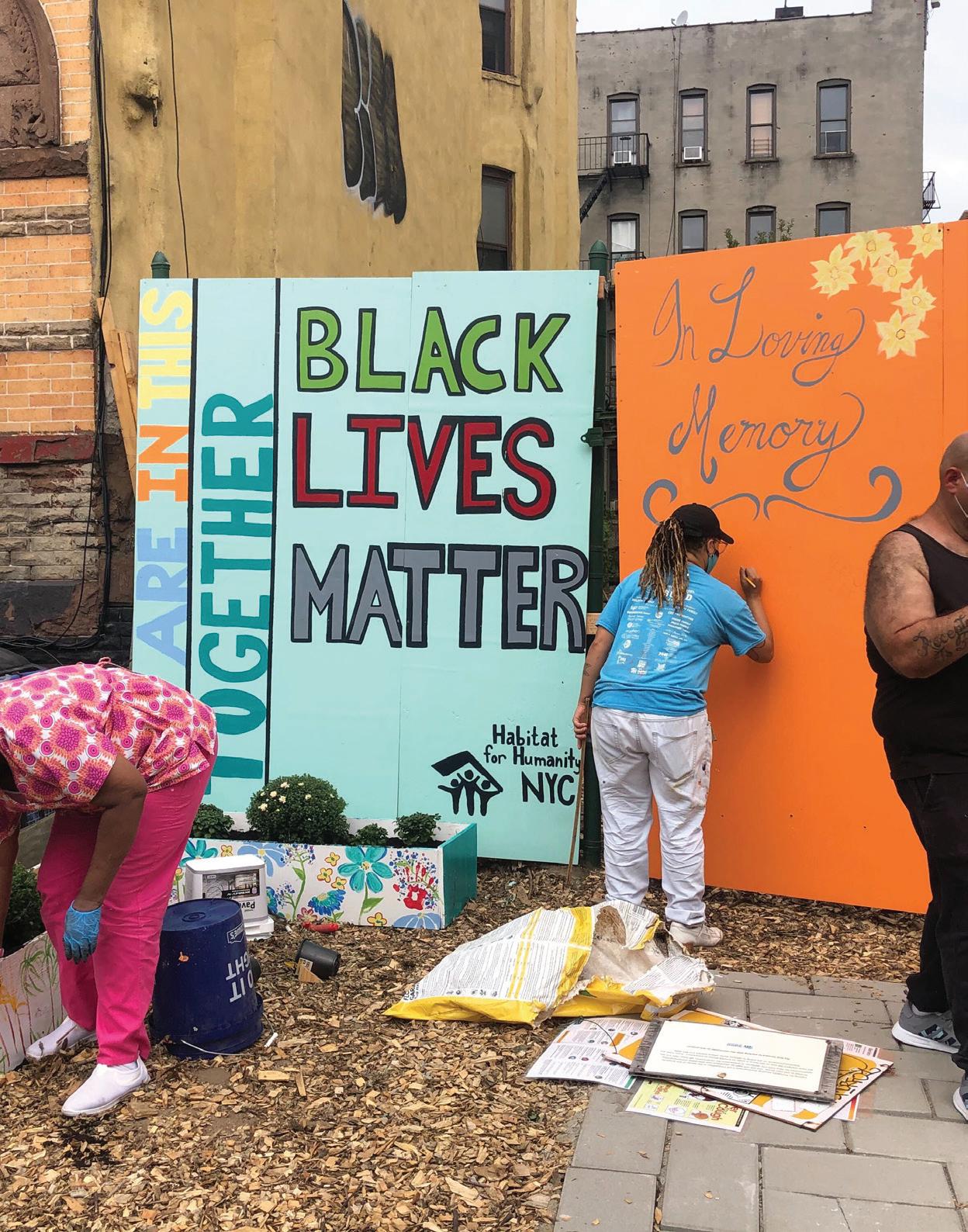
4 minute read
3.3 | RACIAL EQUITY
Advance Racial Equity in Every Dimension of New York City’s Housing Policy
Institutional racism has shaped New York City’s housing environment and choices, contributing to segregated neighborhoods, concentrating poverty and denying wealth-building and educational opportunities to people of color.
The next mayor’s housing plan must respond to this long and painful history.
Housing discrimination, including redlining and real estate discrimination and steering, concentrated Black and Latinx people30 in underfunded neighborhoods, many of which were also decimated by highway construction and environmental contamination, and sometimes in the name of urban renewal.
Job discrimination trapped Black and Latinx New Yorkers in low income jobs or denied them employment altogether. Meanwhile a racist criminal justice system has disproportionately criminalized and incarcerated Black Americans. These two factors have resulted in generational housing instability and contributed to disproportionate numbers of people of color in government programs like public housing31 and homeless shelters.32 And City, State, and federal actors have underfunded the city’s public housing, leaving their residents of color in housing with poor conditions and insufficient services.
Finally, discriminatory and predatory lending denied or stole the wealthbuilding opportunity of homeownership and extracted wealth from Black and Latinx people.
A substantial racial wealth gap has resulted and grown between White and Black families. In 1984, White families’ median wealth exceeded Black families’ wealth by 12 times and Latinx families’ wealth by 8 times; after the financial crash, White families’ median wealth grew to exceed Black families’ 20 times and Latinx families’ 18 times.33
In June 2020, the murders of George Floyd, Breonna Taylor, Ahmaud Arbery and other uncounted Black Americans sparked an unprecedented wave of recognition, activism, and anti-racism demonstrations in New York City and nationwide. Members of the United for Housing Campaign have long recognized racial equity as an essential, central pillar of the next mayor’s housing platform. The next mayor of New York City must bring a deep understanding of the institutional racism that has shaped the City’s housing policy to date and commit to constant monitoring of the consequences of new and existing policy on non-White New Yorkers.
UNJUST
Housing policy in New York City, as in cities throughout the United States, is grounded in and upholds a legacy of racism.
A Definitive Vision of Equity for New York City
Above all, United for Housing asks that the next mayor’s housing plan build toward an equitable future in New York City, in which a New Yorker’s identity does not determine their access to housing, wealth, and security. The next mayor can work to make race and identity irrelevant predictors of prosperity for
New York City residents.
Exploring a Reparative Approach to Housing A history of racist policies has created gaps in homeownership, wealth disparities, segregated neighborhoods and disrupted communities in New York City. It is incumbent upon the City to acknowledge its role in that history and begin to repair the damage. Many of the policy proposals in this document would contribute to repairing inequity in housing. The next mayor should explore how these programs, along with others, can begin to close the racial wealth gap, affirmatively further desegregation, and heal community fabric.

We challenge mayoral candidates to articulate their vision of what an equitable housing plan for New York City looks like. The vision should be bold, yet grapple with the specific disparities and propose rigorous, specific plans to substantially address the issue:
- Black and Latinx New Yorkers are overrepresented in high-poverty neighborhoods
Q: How will you undo segregation, increase the access New Yorkers of color have to high-opportunity neighborhoods, and increase the quality and level of services in existing low-income neighborhoods?
- New Yorkers of color, New Yorkers involved in the criminal legal system, and undocumented immigrants are excluded from affordable and high-quality rental opportunities due to rampant informal and institutionalized housing discrimination in New York City and nationwide.34,35 Black and Latinx New Yorkers also face twice the risk of eviction faced by White households.36
Q: How will you expand and stabilize access to affordable rental housing and and combat housing discrimination?
- 43% of White households and 44% of Asian households own their own homes in New York City, while only 27% of Black households and 17% of Latinx households own their own homes.37
Q: How will you dramatically increase the percentage of Black and Latinx homeowners in the City?
History of Housing Injustice
Landmark decision of the U.S. Supreme Court that upheld racial segregation laws in America.
Blacks blocked from access to low housing costs and generational wealth building benefits of the GI Bill.
Enacted to drive investment in lowincome communities but fails to reverse damage caused by redlining. Statues adopted to keep AfricanAmericans from living in predominately white areas. NAREB Code of Ethics requires realtors to discriminate or be fined or removed from local real estate boards.
Black and Latinx neighborhoods had been redlined and lost value, while segregated suburbs built housing wealth; entrenching a racial wealth and housing divide that remains today. Landmark legislation to prohibit discrimination in housing that remained largely unenforced for decades.
Widespread foreclosures hit the black community the hardest, widening the already large wealth gap.
Black and Latinx households face disproportionate economic and health impacts, including loss of income and housing insecurity.
Black people are ~5 times more likely to be hospitalized and twice as likely to die from Covid than whites.1
59% of Black renters
fell behind on rent by Nov 2020.2 In NYC, 89% of people sleeping in shelters are Black or Latinx and are at increased risk of fatalities due to COVID-19.3









